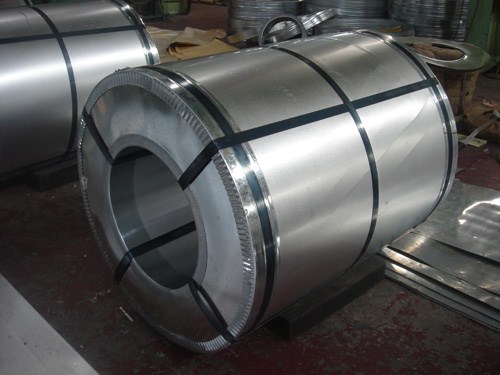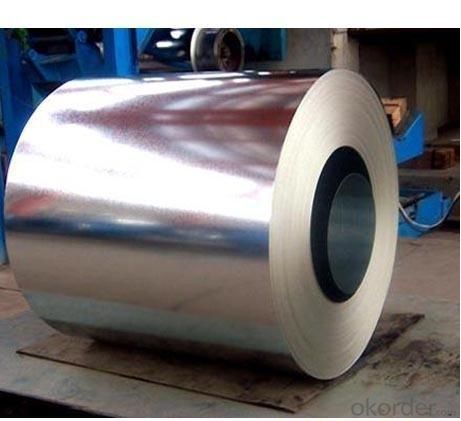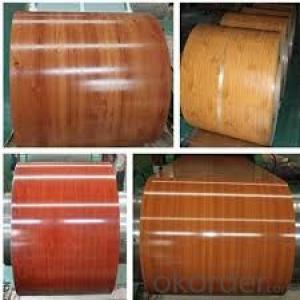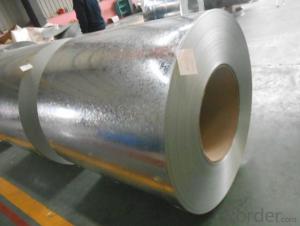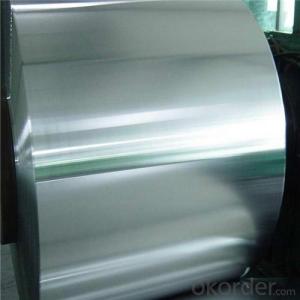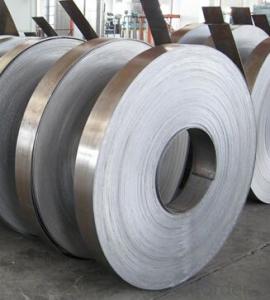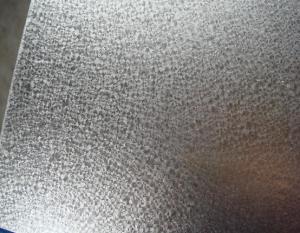HOT-DIP ALUZINC STEEL
- Loading Port:
- Tianjin
- Payment Terms:
- TT OR LC
- Min Order Qty:
- -
- Supply Capability:
- 12000 m.t./month
OKorder Service Pledge
OKorder Financial Service
You Might Also Like
THICKNESS:0.18mm-1.5mm
WIDTH:900mm-1250mm
COATING MASS:AZ30-AZ150
SPANGLE:Minimized Spangle,Zero Spangle
SURFACE TREATMENT:N0on or Chromated,Non or Oiled,Non or Anti Finger Print
COIL INNER DIAMETER:508mm/610mm
COIL WEIGHT:3mt-7m
In continuous units in cold rolled steel strip, galvanized steel (electro galvanized and hot dip galvanized) as substrate, after surface pretreatment (degreasing and science processing), using the method of roll coating, coated with a layer or multi-layer liquid coating of plate, after baking and cooling income is the coating steel plate. Because the coating can have a variety of colors, on the habits of the coated steel sheet is called color coating steel plate. Because the coating is carried out before the sheet metal forming, in foreign countries which is called pre coating plate.
Color coated steel sheet is an organic coating coating on the steel surface, it has the advantages of beautiful appearance, bright color, high strength, good corrosion resistance, easy processing molding, but also allows the user to reduce costs, reduce pollution.
From the United States in 1935 to establish the first continuously coated steel line to begin, color coated steel plate has been widely applied, the current color coated plate varieties, about more than 600 kinds, the advantages of color coated sheet and organic polymer and steel plate of the two, which has good colorability, organic polymer molding, corrosion resistance and decorative, and steel plate with high strength and easy processing, can easily be punching cutting, bending, deep drawing processing. Made this makes organic coated steel sheet products have excellent practical, decorative, workability, durability.
(1) normal spangle coating spangle coating
Zinc layer in normal during the solidification process of Zn grains grew up, freeforming has obvious flower morphology of zinc coating.
(2) small zinc flower coating minimized spangle coating
Zinc coating in the process of solidification, zinc grain was artificially restricted,as far as possible into small zinc flower coating.
(3) no zinc flower coating spangle-free
By adjusting the chemical composition of the plating solution obtained, has novisible zinc flower morphology, uniform coating surface.
(4) of Zn Fe alloy coating zinc-iron alloy coating
Heat treatment of steel by liquid groove after galvanizing, the alloy layer of the whole generation of zinc and iron coating, the coating appearance is dark gray, no metallic luster, easy to fly in severe forming process, suitable for cleaning in addition to general, without further treatment can be directly paintcoating.
(5) differential coated differential coating
On both sides of the galvanized steel, requires different weight of zinc coatinglayer.
(6) finishing skin pass
Finishing is the following one or several kinds of objective, cold rolling a tinydeformation of the galvanized steel sheet.
The improvement of the galvanized steel surface appearance or suitable for decorative coatings; make the product not see slip line problem (Lv Desi line)or creases temporary minimized etc..
- Q: why do you need to heat steel when hardening, molecules etc etc
- Heat treatment deforms the crystal micro structure of the Steel. With heat (and cold) treatment the organisation or Diffusion of the micro particles can be manipulated. There is a higher concentration of particles after heat treatment, thus making the micro structure of the steel more dense, and the physical performance of the steel better. Stronger. Hope this helps ! Please like.
- Q: I was reading about the Colt 38 Super Custom and it said it's optional between a carbon steel frame or a stainless steel frame. What is the difference? There is also a choice between aluminium or stainless steel hammers and triggers can you also tell me the difference between them please?
- If your talking about a folding pocket knife, I think that it's basically six one way and a half dozen the other. I actually do prefer stainless for my pocket knives. I don't want to oil a knife to the degree I feel carbon requires, only to then stick it my pocket to attract dirt to the knife and oil to my pants. I'm the exact opposite on sheath knives though. I like 1095 carbon steel, plain edge sheath knives. I'll thrash on them HARD, and I rarely have major edge problems. Of course, I require them to be coated with some kind of powder coat or the like, because they can rust, but I do try and keep them clean and dry when in the sheath, so they won't pit the uncoated edge. My reasons for this sheath knife preference is multi-fold. First, these knives are simply affordable. I don't spend $80 dollars on a outdoors sheath knife. I use the tool too hard to want to spend more. I don't like the more traditional stainless steels such as AUS-8, 420HC, and 440C (not to mention the HORRENDOUS 440A) because I feel that the all else being equal, a stainless blade will bend before a carbon blade will break. I also think that carbon holds an edge at least as well, if not better, than traditional stainless, and it's much easier to hone. I don't know much about these new laminates, other than the very hard, but not so tough. They seem to be POSSIBLY too brittle for my use. That, combined with the fact that they cost a FORTUNE, means that I just won't be considering them.
- Q: Guitar?I have a steel- string, but prefer nylon.:)
- Steel string 4 playing wid plectrum, nylon 4 finger style playing
- Q: How are steel coils handled during transportation to prevent damage?
- Steel coils are typically handled with extreme care during transportation to prevent damage. They are secured tightly using steel strapping or bands to prevent any movement or shifting during transit. Additionally, protective packaging materials, such as wooden or steel crates, are often used to provide extra cushioning and stability. Specialized equipment, such as forklifts or cranes, are used to lift and load the coils onto trucks or containers, ensuring safe and secure transportation.
- Q: What are the dimensions of steel coils used in the metalworking tool industry?
- The metalworking tool industry has a wide range of dimensions for steel coils, which can vary depending on the specific application and requirements of the tool. However, there are certain dimensions that are commonly observed in this industry. Steel coils used in metalworking tools typically come in different widths, ranging from 24 inches to 72 inches. The thickness of the coils can also vary, with common thicknesses ranging from 0.020 inches to 0.250 inches. Moreover, the length of the coils can vary significantly, with standard lengths usually falling between 100 feet and 2000 feet or even more. These dimensions are selected based on several factors, such as the type of metal being worked, the specific tool being used, and the desired outcome of the metalworking process. Additionally, other factors like the weight and handling capabilities of the tool, as well as the efficiency of the manufacturing process, may also influence the dimensions of the steel coils used. To ensure the appropriate dimensions for steel coils in the metalworking tool industry, it is essential to consult with manufacturers, suppliers, or industry experts. This is crucial because these dimensions can vary based on specific needs and preferences.
- Q: How are steel coils measured?
- Steel coils are typically measured in terms of their width, thickness, and weight. The width is determined by measuring the distance across the coil's widest point, while the thickness is measured by gauging the thickness of the steel sheet. The weight of the coil is measured by weighing it using scales or load cells.
- Q: what do they use to make stainless steel?and can stainless steel be melted again and again without losing it's Specifications
- Components Of Stainless Steel
- Q: What are the common methods of testing the strength of steel coils?
- Steel coils can be tested for strength using various methods. Tensile testing is one such method, which involves applying tension to the coil until it breaks. This test provides information about the coil's ability to withstand force and its tensile strength. It also reveals details about its yield strength and elongation properties. Another common method is hardness testing, which determines the steel's resistance to indentation or scratching. Different techniques like Rockwell, Brinell, or Vickers tests are utilized to measure hardness. This test helps determine the steel's ability to resist wear or deformation. To evaluate the coil's ductility and flexibility, bend testing is performed. The coil is bent to a specific angle and checked for any signs of cracking or fracturing. Bend testing assesses the material's capacity to withstand bending or forming procedures without failure. Additional methods of testing include impact testing, where controlled impacts are applied to assess the coil's resistance to sudden loading conditions, and fatigue testing, which involves subjecting the coil to cyclic loading to determine its endurance limit and potential for failure under repeated stress. It is important to note that the specific testing methods used may vary depending on the intended application and industry standards. Non-destructive testing techniques, such as ultrasonic testing or magnetic particle inspection, can also be employed to detect internal defects or flaws in steel coils without causing any damage.
- Q: How are steel coils used in the manufacturing of renewable energy equipment?
- Steel coils are used in the manufacturing of renewable energy equipment, such as wind turbines and solar panels, as they provide structural support and durability. The coils are typically used to create the framework or housing for these devices, ensuring their stability and protection against harsh environmental conditions. Additionally, steel coils are also utilized in the production of electrical components and wiring systems, which are essential for the generation and transmission of renewable energy.
- Q: What are the common coil handling challenges?
- Some common coil handling challenges include the difficulty in safely lifting and moving heavy coils, ensuring proper alignment and positioning during handling, preventing damage to the coils or surrounding equipment, and efficiently managing coil storage and retrieval.
Send your message to us
HOT-DIP ALUZINC STEEL
- Loading Port:
- Tianjin
- Payment Terms:
- TT OR LC
- Min Order Qty:
- -
- Supply Capability:
- 12000 m.t./month
OKorder Service Pledge
OKorder Financial Service
Similar products
Hot products
Hot Searches
Related keywords




